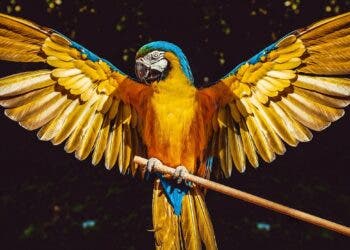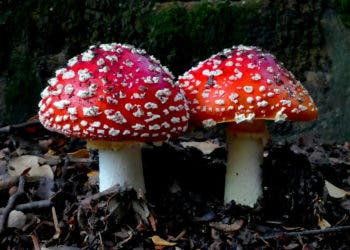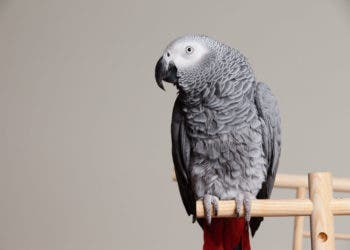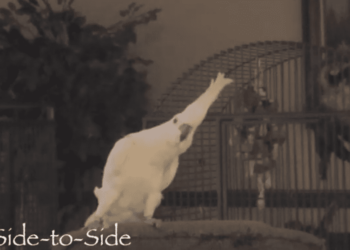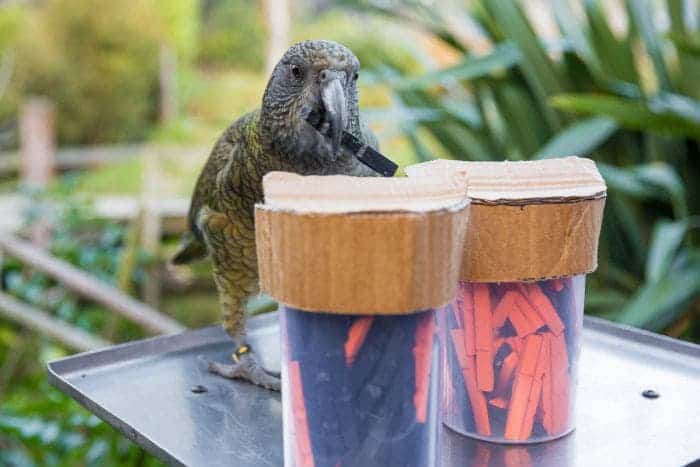
The kea (Nestor notabilis) is a large parrot in the family Nestoridae found in the forested and alpine regions of the South Island of New Zealand. They’re noisy, lively birds that move around awkwardly by hopping sideways in order to move forward. They’re also very playful, inquisitive, brave, and — as a new study has shown — have highly flexible intelligence. According to the findings, the parrots use probabilities to make decisions that yield the best decisions for them. Previously, this ability was thought to be exclusive to humans and great apes.
Researchers at the University of Auckland trained six male keas to associate black wooden tokens with tasty rewards and orange tokens with no reward.
Then, the birds were presented with their first test: two transparent jars containing the same overall number of tokens, only one was crammed with black tokens, while the other was mostly orange.
After 20 trials, three birds showed a clear preference for the jar with more black tokens. Up to now, that’s not very surprising since they were conditioned to recognize the reward-offering token.
In the next experiment, however, the parrots showed they actually are a lot more than meets the eye. This time, the two jars were filled with both black and orange tokens. The number of black tokens was the same in both jars, but one of them had slightly more orange tokens. Four birds showed a clear preference, favoring the jar with the greatest ratio of black to orange tokens.
In other words, the keas meant a mental approximation of which jar might contain the most tokens, juggled the probabilities, and picked the jar which they thought had the highest odds of rendering a treat.
Further experiments involving dividers cemented the notion that the birds weren’t simply responding to the actual number of tokens in the jar — they considered the relative likelihood of obtaining a black token.
The keas were even able to pick one of two researchers whom they’d previously watched always taking black token. In other words, they remember who the biased person was.
This kind of flexible intelligence had only been seen before in humans and chimpanzees, the authors wrote in the journal Nature Communications.
Speaking to The Guardian, co-author Alex Taylor of the University of Auckland said that the findings have important implications for unraveling the origins of intelligence (the common ancestor of humans and birds split about 300 million years ago), as well as artificial intelligence.
“One of the holy grails of research on artificial intelligence is the type of commonsense reasoning that humans show, where we bring together multiple sources of information into a single prediction or judgement about what will happen next in the world,” he said. “Our work suggests that aspects of this ability have likely evolved twice on our planet – in primates and birds.”
